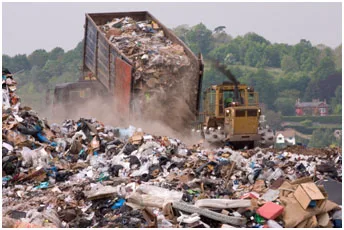Getting the Message Out … Everything Changes But Clarity, Continuity
With the dramatic growth of social media, instant news and the 140 plus-character message, some folks like to say citizen journalism has paved the way for the demise of professional news coverage and company news dissemination.
Actually, it’s made it better for both because news consumers aren’t as stupid as some would like you to believe. Poor ideas, poorly developed and poorly executed content is still … garbage.
 There are damn good journalists, reporters, analysts in the world and they want/need good information and information sources.
There are damn good journalists, reporters, analysts in the world and they want/need good information and information sources.
That means good publicity or news release development and distribution can be the backbone of a company’s internal and external relationship activities.
Done right, it can get information on the firm’s hardware/software developments, product introductions, applications news, customer service/support commitment and management positions on key market/industry activities to people inside and outside the company.
One good news item on top of another on top of another can:
- Make potential business partners and consumers aware of the company, its products, programs
- Highlight the firm’s direction, focus, capabilities
- Pave the way for sales
- Help explore potential new markets
- Build/strengthen relations with present customers
- Attract , keep the best employees for the firm’s growth
Sound benefits!
On the other hand … garbage is still garbage.
The hard part is writing the news.
 “Good writing is damn hard work.” – Author Unknown
“Good writing is damn hard work.” – Author Unknown
It’s called “news” for a reason:
- It’s about new products, new services and new applications
- It’s about establishing the company’s position, focus and direction
- It’s about being fresh, informative, factual
- It’s about telling the story from the customers’ perspective, not yours
- It’s about quality news, not quantity
- It’s not about filling the screen with superlatives, acronyms and hackneyed phrases
Releases aren’t short stories or the great American novel. Releases should:
- Begin with contact names, phone numbers and email addresses. When writers, reporters need information, management inputs, photos they need them immediately, not when it is convenient for you
- Be written with the editor/reporter in mind and his/her audience–not management
- Start with accurate essentials – who, what, when, where, why and how
- Be written in a manner that permits the editor/reporter to go from the summary idea to the greatest detail
- Be written without technobabble that no one understands or loaded acronyms, phrases that drive you to Wikipedia to interpret
- Be well formatted so they are inviting and easy to read with bold-face subheads so they can be quickly scanned and the reporter quickly gets the essence of the news
- Include information essential to the story and the editor/reporter–not management flattering “fluff”
- Be simple, factual, complete. Tell the complete story, deliver all the facts … and stop
- Be written to position the company and product/service quickly, clearly and concisely
- Have complete sentences with active nouns and verbs
- Follow the fundamental news style – yes, even in the world of Facebook there is a news style. It should have solid/complete information – nothing more, nothing less
Even though a lot of managers don’t understand the difference, PR or publicity writing is significantly different from advertising/sales message writing.
Unfortunately, when it comes to writing for and working with the press, everyone is an expert.
Since early childhood, folks have been told they should – and can – write to communicate. The problem is that for most people, the education didn’t take.
Ask any journalist.
Wrapping everything in currently popular industry phrases, product fluff, marketing messages and hyperbole about being the leading, biggest, best doesn’t impress the journalist. Heck, it doesn’t even impress the consumer … honest.
How often have you seen an actual article that said:
- ABC is the world’s largest, leading, best, greenest firm
- We’re delighted to be working with XYZ corporation
- Delighted to have Bob join our team. Our first choice was Jane but she was too good for us
- The product is the fastest, most powerful, most advanced, most user friendly
- Includes a quote or testimony from another writer, journalist
- The company proclaims they were number three in a three-company market
Writers/journalists write for their target audience … so should you if you want your carefully crafted and fine-tuned news release to be considered, let alone used.
Otherwise, it’s a waste.
 And at some point, you will be judged on results.
And at some point, you will be judged on results.
Headlines Sell
Even in today’s social media age, headlines can make or break a release.
Media writers, reporters – on air, in print, online – know they have less than five seconds to attract the viewer’s/ reader’s attention.
Four-line techno-feature statements don’t interest anyone except the product/service developer.
Clear, concise, informative headlines get their attention (perhaps because they’re so unusual they take them totally by surprise).
Contrary to what you may believe, yours is not the only news release they will receive today; try a couple of hundred.
Most will disappear as soon as they appear.
 As Dave Graveline, host of Into Tomorrow, is fond of repeating in his weekly newsletter, “No trees were killed in the sending of this message. However, a large number of electrons were terribly inconvenienced.”
As Dave Graveline, host of Into Tomorrow, is fond of repeating in his weekly newsletter, “No trees were killed in the sending of this message. However, a large number of electrons were terribly inconvenienced.”
Quality hasn’t changed but quantity has “improved.”
Ask your favorite reporters, editors, webmasters, bloggers.
The first to hit the can are weak, amateurish, and simply incomprehensible.
Electronic distribution is so much easier – and less expensive – than old-fashioned smail that everyone deserves his/her copy … just in case.
The military has an elegant name for it … carpet-bombing.
 The irony is that despite the years of doing this stuff, complaints remain the same:
The irony is that despite the years of doing this stuff, complaints remain the same:
- meaningless personal notes with the release
- people who request that no changes be made to the copy
- people who want clippings of the published release
- people who make no bones about pointing out the fact that they advertise
- people in our instant access world insist on an embargo
At the same time, real news people now have more sources – some more credible than others – at their fingertips:
- search engines to search for specific subjects
- trusted blogs, sites they visit daily
- inputs, ideas from social media sites
- innocent (or dumb) tweets that tell all with a little
- people who make themselves available to assist, explain, clarify
Mediocrity can’t be the best you can do!
Over the years, the media landscape has changed. But journalists, reporters are still excellent researchers, writers … regardless of the ultimate medium!
 Despite all of our technical advances and tools, Mark Twain in the 1880s summed it up best, “I notice that you use plain, simple language, short words and brief sentences. That is the way to write English – it is the modern way and the best way. Stick to it; don’t let fluff and flowers and verbosity creep in. When you catch an adjective, kill it. No, I don’t mean utterly, but kill most of them – then the rest will be valuable. They weaken when they are close together. They give strength when they are wide apart. An adjective habit, or a wordy, diffuse, flowery habit, once fastened upon a person, is as hard to get rid of as any other vice.”
Despite all of our technical advances and tools, Mark Twain in the 1880s summed it up best, “I notice that you use plain, simple language, short words and brief sentences. That is the way to write English – it is the modern way and the best way. Stick to it; don’t let fluff and flowers and verbosity creep in. When you catch an adjective, kill it. No, I don’t mean utterly, but kill most of them – then the rest will be valuable. They weaken when they are close together. They give strength when they are wide apart. An adjective habit, or a wordy, diffuse, flowery habit, once fastened upon a person, is as hard to get rid of as any other vice.”
That’s good writing!
# # #